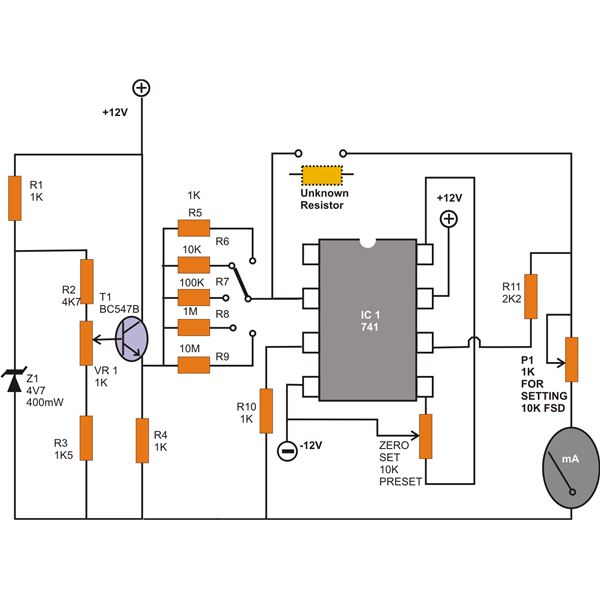Preface: Understand, I know just enough about electronics to be dangerous... so pretend I know nothing as it will be close to reality.
I am trying to figure out how to build a simple Ohmmeter. The goal is to measure the resistance of a heating wire on a small scale.
The circuit requirements are 3vdc and to measure 0-10 Ohm of resistance accurate to .1 possibly .01. The output will go to a LED diplay and all will be mounted in a AA battery box.
Here are the basic components... the suppliers are just who I found the parts fastest at for reference purposes.
What I want it to do is basically the same funtcion as
http://www.ebay.com/itm/280826388767?ssPageName=STRK:MEWNX:IT&_trksid=p3984.m1439.l2649
Project form factor:
http://www.amazon.com/Cells-Battery-Plastic-Storage-Holder/dp/B009OZYY7W/ref=sr_1_14?ie=UTF8&qid=1377875883&sr=8-14&keywords=3+x+aa+battery+holder
The output:
http://www.ebay.com/itm/7-segment-3-digit-Common-Anode-Led-Display-1D2-/151107740032?pt=LH_DefaultDomain_0&hash=item232eb92180
I was thinking that I would need an operational amplifier. Then set it up to show on the display the inverted voltage results. So when the resistance is added to the circuit the display would scale upward/downward based on the wire resistance.
I have seen several schematics that are very close to what I want, but my needs are far simpler than most of the options.
I was thinking about the LM741 as control. I understand the basics, but I am lost in the circuit details.
Any help would be GREATLY appreciated.
I am trying to figure out how to build a simple Ohmmeter. The goal is to measure the resistance of a heating wire on a small scale.
The circuit requirements are 3vdc and to measure 0-10 Ohm of resistance accurate to .1 possibly .01. The output will go to a LED diplay and all will be mounted in a AA battery box.
Here are the basic components... the suppliers are just who I found the parts fastest at for reference purposes.
What I want it to do is basically the same funtcion as
http://www.ebay.com/itm/280826388767?ssPageName=STRK:MEWNX:IT&_trksid=p3984.m1439.l2649
Project form factor:
http://www.amazon.com/Cells-Battery-Plastic-Storage-Holder/dp/B009OZYY7W/ref=sr_1_14?ie=UTF8&qid=1377875883&sr=8-14&keywords=3+x+aa+battery+holder
The output:
http://www.ebay.com/itm/7-segment-3-digit-Common-Anode-Led-Display-1D2-/151107740032?pt=LH_DefaultDomain_0&hash=item232eb92180
I was thinking that I would need an operational amplifier. Then set it up to show on the display the inverted voltage results. So when the resistance is added to the circuit the display would scale upward/downward based on the wire resistance.
I have seen several schematics that are very close to what I want, but my needs are far simpler than most of the options.
I was thinking about the LM741 as control. I understand the basics, but I am lost in the circuit details.
Any help would be GREATLY appreciated.











